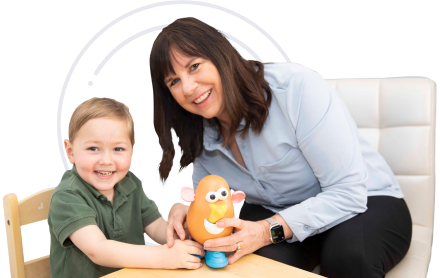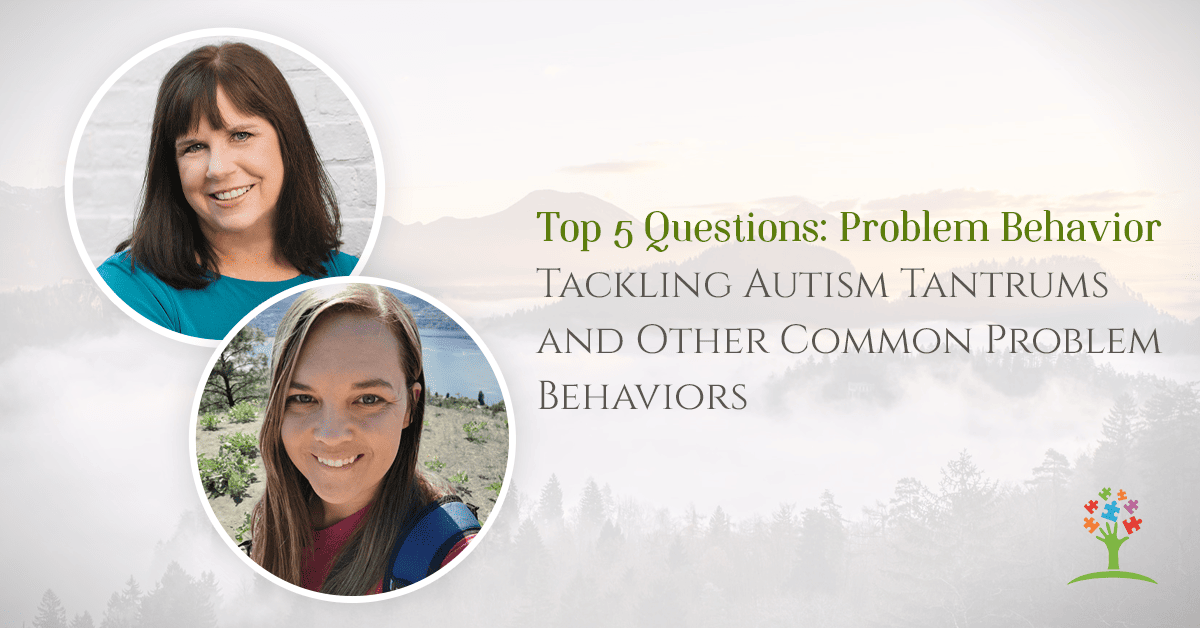Top 5 Questions: Tackling Autism Tantrums and Other Common Problem Behaviors
Want to Learn how to Increase Talking & Decrease Tantrums in Children with Autism or Toddlers Showing Signs?
Want to start making a difference for your child or clients?

Biting and Chewing
Accepting “No”
Autism and Eloping
Throwing
Unsafe Jumping and Climbing
This is closely related to throwing. Are you providing safe and appropriate opportunities to jump and climb? Are you keeping the child engaged throughout their day? Are you creating a safe environment by anchoring furniture and removing dangerous climbing hazards? Providing safe alternatives is going to prevent unsafe behaviors. Additionally, working on table time activities outlined in my book and courses are going to create opportunities for learning and engaging in safe behavior.
Many of the questions Kelsey and I discussed today were worded with “how do I stop” language, the focus for most of the answers revolved less around stopping behavior and more about prevention. Kelsey receives 20+ questions a day on important topics like this. We will be back soon to tackle more and get these answers out.
Please remember, reviews are so important for getting this information to other parents and professionals who need it. If you found this podcast helpful, please leave a review wherever you listen!

Kelsey General on the Turn Autism Around Podcast
Kelsey is a single mom to two boys, living in BC, Canada. In 2016 her oldest son was diagnosed with autism at 25 months old. After learning he would not qualify for the support he needed, Kelsey began her journey of learning how to help him. Since then, Kelsey has continued her education in the field in order to provide her children and others in the community the direct intervention they needed. Now, Kelsey homeschools both her kids with support from a team of consulting professionals while also working with other families providing behavior analytic services and parent coaching services. Kelsey and her boys enjoy spending their free time exploring and in nature hiking, biking, camping, and snowboarding. You can follow her adventures and learn more about getting children with autism outside safely on her Instagram page, www.instagram.com/littleadventurefamily.
You’ll Learn
- How to prevent problem behaviors
- What are the top 5 common problem behaviors we get questions about in the online community
- What the difference is between biting and chewing
- Why accepting no is usually not a developmentally appropriate skill
- How to keep kids safe when they try to elope
- How to prevent throwing, jumping, and climbing.
Resources
- Sign up for a free workshop online for parents & professionals
- No More Time Out Mini Course
- Lessons about Turning Autism Around: An Interview with a Mom of 2 Young Boys with Autism
- Autism Case Study with Michelle C : From 2 Words to 500 Words with ABA Online Course
- Why Timeouts Don’t Work and Alternatives You Can Use Instead
- Precision Teaching and Autism | Interview with Amy E. and Kelsey G.
- Improving Problem Behaviors in Children with Autism
- How to Resolve Biting in Children with Autism
- Could Autism Self Injury Be Due to Pain? With Dr. Timothy Vollmer
- Should You Use Chew Toys for Kids with Autism?
- How to Teach Children to Wait and Accept No
- Autism and Safety: Keeping Kids with Autism Safe
Want to Learn how to Increase Talking & Decrease Tantrums in Children with Autism or Toddlers Showing Signs?
Want to start making a difference for your child or clients?
